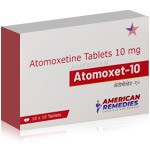Hyperactivity: Understanding the Condition, Its Symptoms, and Treatment Options


Hyperactivity is a behavioral state characterized by excessive movement, impulsiveness, and difficulty maintaining attention. While the term is commonly associated with children who appear restless or overly energetic, hyperactivity can affect people of all ages and can significantly impair daily functioning. Understanding the roots and manifestations of hyperactive behavior is crucial for early identification, proper diagnosis, and effective treatment.
What is Hyperactive Behavior?
Hyperactive behavior is not simply having high energy. Instead, it involves a persistent pattern of increased motor activity that is inappropriate for a person's age and developmental level. This behavior can manifest as constant fidgeting, talking excessively, interrupting others, running or climbing in unsuitable situations, or being unable to sit still for tasks that require concentration.
In clinical terms, hyperactivity is often discussed in relation to attention-deficit/hyperactivity disorder (ADHD), a neurodevelopmental condition that affects both children and adults. However, not all individuals who are hyperactive have ADHD, and hyperactivity can also be symptomatic of other psychiatric or medical conditions, such as anxiety disorders, bipolar disorder, or certain neurological conditions.
Recognizing the Signs: Seven Common Symptoms
While the exact presentation can vary between individuals, there are some hallmark signs of hyperactivity that are commonly observed. First, individuals may exhibit excessive fidgeting or tapping of hands and feet, even in calm settings. Second, they may have difficulty remaining seated when it is expected, such as during meals or classroom activities. Third, a person might seem to be always "on the go," as if driven by a motor. Fourth, they often talk excessively, which can make social interactions challenging. Fifth, they may interrupt conversations or activities, demonstrating a lack of impulse control. Sixth, they might have difficulty engaging in quiet activities. And finally, they often shift quickly from one task to another without completing any, which reflects impaired attention and organizational abilities.
These behaviors become clinically significant when they are chronic, pervasive across multiple settings, and interfere with academic, occupational, or social functioning.
Is ADHD the Same as Hyperactivity?
Hyperactivity is a major component of ADHD, but it is not synonymous with the disorder itself. ADHD is typically diagnosed based on a triad of symptoms: inattention, hyperactivity, and impulsivity. According to the Diagnostic and Statistical Manual of Mental Disorders (DSM-5), ADHD can present in three main subtypes: predominantly inattentive, predominantly hyperactive-impulsive, and combined.
Thus, while hyperactivity is a prominent and sometimes the most visible symptom of ADHD, it is only one aspect of the disorder. Some individuals may have ADHD without being notably hyperactive, especially in cases where inattentiveness predominates. Conversely, some children may exhibit hyperactive behavior without meeting the full diagnostic criteria for ADHD.
This distinction is important because it influences treatment strategies. Not all hyperactive individuals benefit from ADHD-specific treatments, and other underlying causes may need to be addressed.
What is Hyperactivity Disorder?
Hyperactivity disorder is often used as a shorthand or outdated term for ADHD, particularly in informal settings. In modern clinical practice, ADHD is the accepted diagnostic term. The condition is believed to have a neurological basis and is influenced by both genetic and environmental factors. Brain imaging studies suggest that individuals with ADHD may have differences in the structure and function of certain brain regions involved in attention, impulse control, and executive function.
The disorder typically becomes evident in early childhood, although it can persist into adolescence and adulthood. Symptoms may evolve over time: hyperactivity might diminish in adulthood, while challenges with attention and executive function often remain. Diagnosis is usually based on a comprehensive assessment, including behavioral evaluations, input from caregivers or teachers, and standardized rating scales.
It’s also important to differentiate hyperactivity disorder from temporary hyperactive behavior caused by factors like sleep deprivation, poor nutrition, stress, or high-sugar diets. A formal diagnosis requires that the symptoms be chronic and significantly impair functioning.
The Role of Atomoxetine in Treating Hyperactivity and ADHD
Medication can be a key part of managing ADHD, especially in moderate to severe cases. While stimulants such as methylphenidate and amphetamines are the most commonly prescribed drugs for ADHD, non-stimulant medications like atomoxetine (brand name Strattera) have emerged as important alternatives.
Atomoxetine is a selective norepinephrine reuptake inhibitor (NRI) that works differently from stimulant medications. It increases the levels of norepinephrine in the brain, which helps improve attention and reduce impulsive behavior and hyperactivity. One of the advantages of atomoxetine is that it is not a controlled substance and has a lower risk of abuse and dependency compared to stimulants. This makes it a preferred option for individuals with a history of substance use or those who experience significant side effects from stimulant medications.
Clinical trials have demonstrated the efficacy of atomoxetine in reducing core ADHD symptoms in both children and adults. It may take several weeks to see the full therapeutic effects, which is slower than the onset of action seen with stimulant medications. However, its 24-hour coverage and low potential for misuse make it a valuable tool in long-term management.
Atomoxetine can also be particularly helpful in individuals who have co-existing anxiety disorders, as stimulants sometimes exacerbate anxiety. However, like all medications, it comes with potential side effects, including gastrointestinal discomfort, appetite loss, fatigue, and, in rare cases, suicidal thoughts. Close monitoring by healthcare professionals is essential when initiating or adjusting treatment.
Integrative Management and Long-Term Outlook
Effective treatment of hyperactivity, especially when associated with ADHD, typically involves a combination of medication, behavioral therapy, psychoeducation, and environmental modifications. Cognitive-behavioral therapy (CBT) can help individuals develop strategies for managing impulsivity, improving organizational skills, and regulating emotions. Parents and teachers can also be trained in behavior management techniques to support children in school and at home.
Educational interventions, such as individualized education plans (IEPs), can ensure that children receive the academic support they need. Creating structured routines, reducing distractions, and providing clear expectations are also essential strategies in managing hyperactivity.
While hyperactivity can pose significant challenges, many individuals with this trait go on to lead successful, fulfilling lives. Early diagnosis and intervention, combined with an individualized and flexible treatment approach, greatly improve outcomes. With appropriate support, those with hyperactive tendencies can harness their energy in productive and creative ways.
Conclusion
Hyperactivity is a complex and multifaceted behavior that can indicate a deeper neurodevelopmental condition, such as ADHD, or arise from other causes. Recognizing the signs, understanding the nuances between hyperactivity and ADHD, and knowing the treatment options — such as atomoxetine — can empower individuals and families to seek effective help. Through a combination of medical, psychological, and environmental strategies, it is entirely possible to manage hyperactivity and unlock the potential of those affected.
Medically Reviewed by Dr. Rabeea Aboufakher, MD
(Updated at Jun 12 / 2025)

